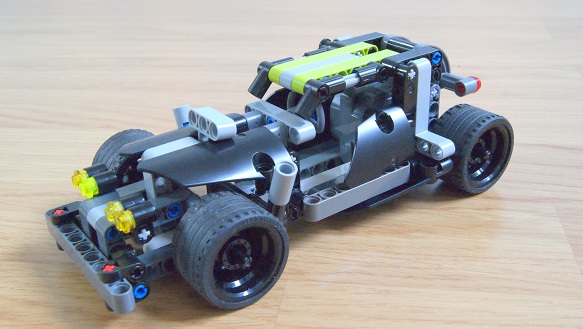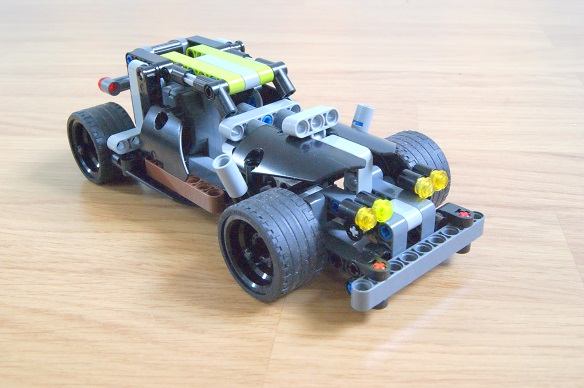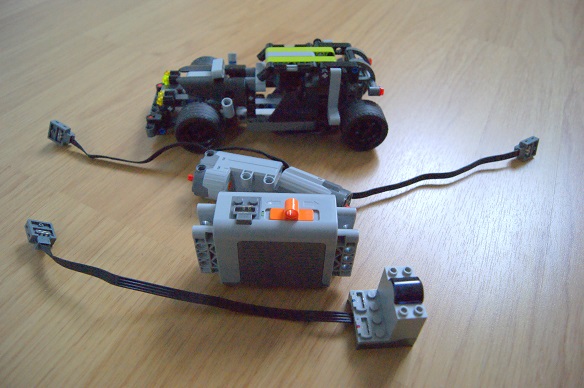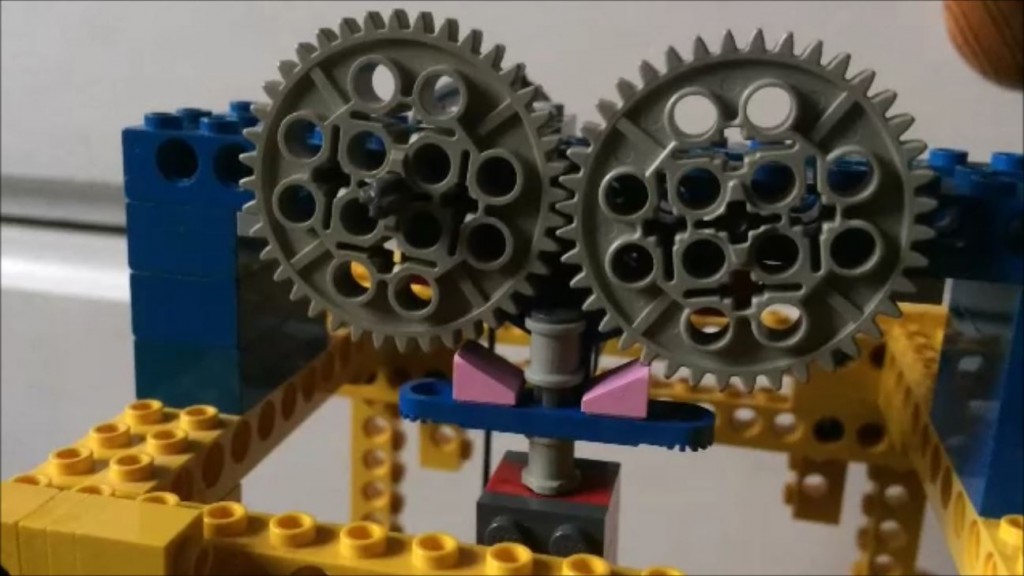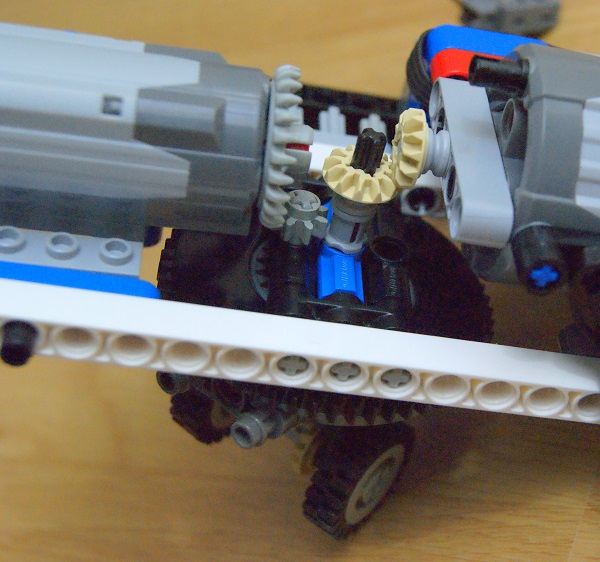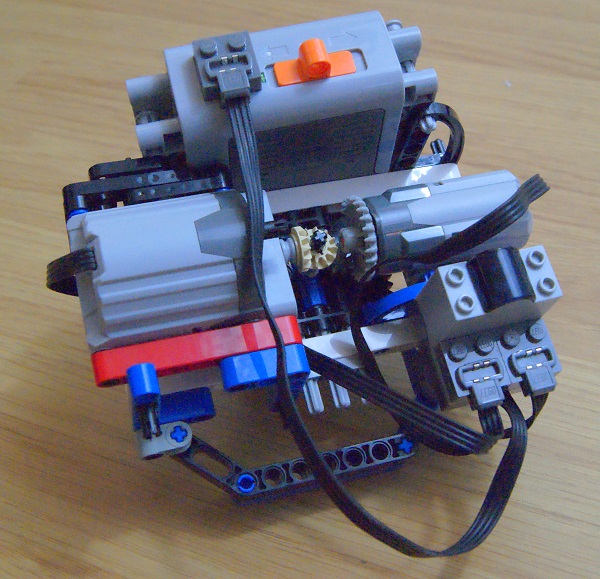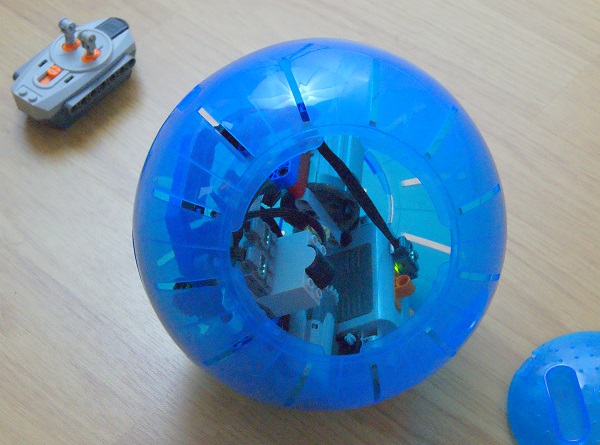In January, I expressed my frustration about the lack of radio controlled car in the LEGO Technic range, or indeed about LEGO Technic cars that can be motor-powered. The latter point appears to have been addressed somewhat in the new 42050 Drag Racer. At the end of the instructions (see the Brickset listing and scroll down), steps are given for incorporating 8293 Motor Set. This makes it possible to add the small ‘M’ Motor to the drive-train, and make this beast do wheelies. The battery box sits right at the back, as a counterweight. Sadly, there appears to be no radio control option in the instructions.
So I am still on my quest for making a radio controlled car out of one of the current Lego Technic vehicles. I have a remote control and receiver, I have motors and servos, I have a battery box and cables. I even have batteries. So let’s look at some of the cars available and see if they are suitable.
First up is 42046 Getaway Racer. Fabulous styling with a pull-back-and-let-go motor. Perfect for smashing into big sister’s feet or newly painted skirting boards, or generally getting bad guys away from the scene of the crime. I built this using parts I already had, hence the slightly different colour scheme from the official version, and the lack of stickers. I love this little rascal.
This Technic model is at the lower end of the price range. It is easy to build, targeted at the lower end of the age range, and should present no major problems to new or experienced Technic builders. It’s also great fun to play with.
So how does it fare for radio control? I would love to make this model skid round the room but alas it doesn’t have working steering, and it isn’t big enough for the parts we need to add. The Lego Power Functions battery box (with the orange switch in the picture below) is nearly as big as the racer. And we also need to squeeze in the receiver (bottom right), the servo and the motor.
So the little getaway racer has got away without radio control today. Shame really, cos I really like that car. Next time, we will look at something slightly bigger.
* Note on Links – Many links on this page point to Brickset.com instead of shop.lego.com. Although I would like to point you directly to the shopping page, the correct web address depends on what country you are shopping from, and might not work. So I point you at Brickset instead. Brickset has links to the Lego shopping pages in different countries, as well as loads of other useful information about the LEGO sets, going right back to the dawn of time.
